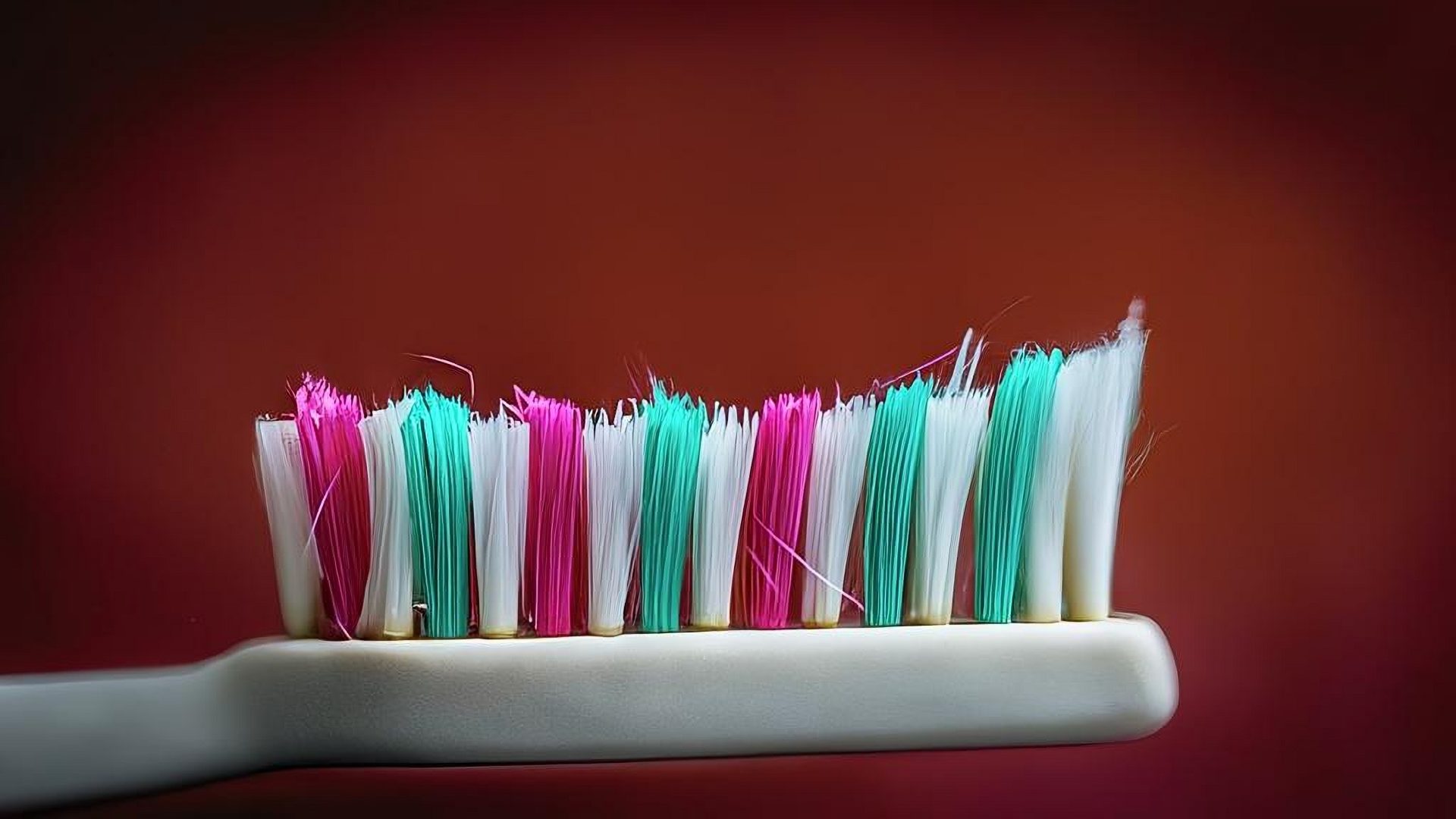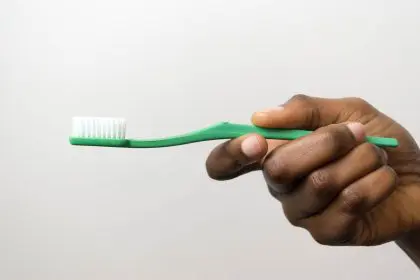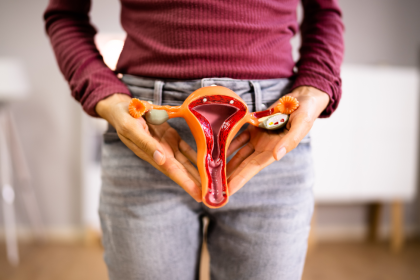Hiding in plain sight on your bathroom counter is a potential health risk many overlook: an aging toothbrush. While most people diligently brush twice daily, they often forget the brush itself needs regular replacement. Dental professionals warn that continuing to use an old toothbrush isn’t just ineffective—it could actively harm your oral health in ways you’d never expect.
The three-month rule dental experts stand by
Dental specialists consistently recommend replacing your toothbrush every three months. This timeline isn’t arbitrary—it’s based on extensive research showing that bristles begin to deteriorate and harbor harmful bacteria after this period.
“After about 12 weeks of regular use, toothbrushes undergo significant wear that compromises their effectiveness,” notes dental professionals tracking brush deterioration. The once-straight bristles bend, fray, and lose their cleaning power, meaning your brushing routine becomes progressively less effective even if you maintain perfect technique.
For electric toothbrush users, this same principle applies. The replaceable heads follow identical degradation patterns and should be swapped out on the same quarterly schedule. Many modern electric models now include indicator bristles that fade when replacement time approaches.
Why waiting too long creates 5 serious health risks
Using an outdated toothbrush introduces several potential health complications that extend beyond just having slightly less clean teeth:
- Ineffective plaque removal: Worn bristles fail to reach between teeth and along the gumline where bacteria thrive, allowing plaque to accumulate despite your brushing efforts.
- Gum damage and recession: Frayed bristles can become sharp and abrasive, potentially scratching delicate gum tissue and contributing to receding gums that expose sensitive tooth roots.
- Bacterial transfer: Old toothbrushes harbor millions of bacteria, fungi, and other microorganisms that multiply over time. Each brushing session can reintroduce these pathogens into your mouth, potentially causing recurrent infections.
- Enamel erosion: Splayed bristles distribute pressure unevenly across teeth, potentially wearing down enamel in concentrated spots rather than cleaning uniformly.
- Persistent bad breath: When brushing becomes less effective due to worn bristles, food particles remain trapped between teeth, contributing to chronic halitosis that resists treatment.
These risks increase proportionally with how long you extend usage beyond the recommended three-month replacement window.
Clear signs it’s time for immediate replacement
While the three-month guideline provides a reliable schedule, certain visual indicators signal the need for immediate replacement regardless of timing:
Visibly frayed, flattened, or discolored bristles serve as the most obvious warning signs. When bristles no longer stand straight or have changed from their original color, their cleaning effectiveness has already significantly diminished.
The bristle angle also matters—when they begin permanently bending outward rather than standing upright, your brush has reached retirement age. Some precision brushes include colored indicator bristles that fade specifically to signal replacement time.
Beyond visible cues, if your teeth don’t feel as clean after brushing or if your brush develops an unusual odor, these sensory signals indicate microbial buildup that regular rinsing can’t address.
Most importantly, replace your toothbrush immediately after recovering from any illness, especially respiratory or oral infections. Your brush can harbor the pathogens that caused your illness, potentially triggering reinfection if you continue using it.
The connection between brush replacement and overall wellness
Modern dentistry increasingly recognizes oral health as a window into overall physical wellbeing. Poor oral hygiene correlates with increased risk of cardiovascular disease, diabetes complications, and respiratory issues.
“The mouth serves as an entry point and potential breeding ground for harmful bacteria,” dental professionals emphasize. “When these bacteria proliferate due to ineffective brushing tools, they can enter the bloodstream through inflamed or bleeding gums.”
This bacterial migration explains why gum disease shows statistical links to heart conditions—the same inflammation-causing bacteria can affect tissues far from the mouth.
Regular toothbrush replacement represents one simple yet crucial component of a comprehensive oral care routine that protects not just your smile, but potentially your cardiovascular system, respiratory health, and metabolic function.
The complete dental care routine professionals recommend
While timely toothbrush replacement forms a cornerstone of proper oral hygiene, it functions best as part of a comprehensive approach:
Choose soft-bristled brushes to protect enamel and gum tissue. Medium and hard bristles might feel more effective but can actually damage oral tissues over time. Soft bristles, when used with proper technique, clean just as effectively without the abrasive risks.
Store your brush properly—upright in an open-air holder where it can dry completely between uses. Enclosed containers create humid environments where microorganisms flourish. Never share brushes, as this transfers unique oral bacteria between users.
Brush using gentle circular motions rather than aggressive back-and-forth scrubbing, holding the brush at a 45-degree angle to your gumline. This technique removes plaque without enamel abrasion.
Complement brushing with daily flossing or interdental brush usage to remove debris from areas no toothbrush can reach effectively. Add an alcohol-free antimicrobial mouthwash to reduce bacterial populations throughout the mouth.
Monitor your diet’s impact on oral health by limiting acidic and sugary foods that feed harmful bacteria and weaken enamel. Increasing calcium-rich foods helps strengthen teeth naturally.
Maintain regular six-month dental checkups for professional cleaning and early detection of potential issues before they develop into major problems requiring invasive treatment.
Making brush replacement a habit
Creating a toothbrush replacement schedule prevents the common problem of forgetting how long you’ve been using your current brush. Dental professionals suggest several practical approaches:
Mark your calendar or set a recurring smartphone reminder for three months after each replacement. Some people find success replacing brushes on the first day of each season, creating an easy-to-remember quarterly schedule.
Purchase brushes in multipacks and store them visibly as a reminder. When you open your medicine cabinet and see replacement brushes waiting, you’re more likely to make the switch when needed.
For families, coordinate everyone’s replacement schedule for the same day to simplify the process and reinforce the habit across generations. Children especially benefit from seeing parents model proper dental care practices.
“Consistency in replacement creates consistency in oral health outcomes,” notes dental care specialists. This small habit—replacing an inexpensive item quarterly—yields disproportionate benefits for both immediate comfort and long-term health.
The environmental consideration
As environmental awareness grows, so does concern about plastic toothbrush waste. Traditional plastic handles can take over 400 years to decompose in landfills.
Fortunately, eco-friendly alternatives now abound. Bamboo handles with plant-based bristles offer biodegradable options, while recyclable plastic programs accept used brushes from conscientious consumers.
Some companies now produce brushes with replaceable heads, reducing plastic waste by allowing users to keep the handle indefinitely while changing only the bristled portion.
These environmentally responsible options demonstrate that proper oral hygiene and ecological consideration can coexist—replacing your brush regularly for health doesn’t require significant environmental compromise.
The investment perspective
Viewing regular toothbrush replacement as a preventative investment reframes what might otherwise seem like unnecessary spending. The typical manual toothbrush costs between $2-5, making quarterly replacement a minimal expense compared to dental treatment costs.
A single cavity filling averages $150-300, while more extensive procedures like root canals can exceed $1,000. Regular brush replacement helps prevent these conditions, representing exceptional return on investment.
Electric toothbrush users face slightly higher replacement costs for brush heads, but modern studies suggest these devices can remove up to 21% more plaque than manual alternatives when used correctly, potentially offering even greater preventative value.
From both health and financial perspectives, maintaining fresh brushing tools constitutes one of the most cost-effective preventative health measures available.
The simple act of replacing your toothbrush every three months delivers benefits far exceeding its modest cost and effort. This small change in routine can significantly impact both your immediate comfort and long-term health outcomes.
By treating your toothbrush as the essential health tool it is—one requiring regular maintenance and replacement—you invest in a future with fewer dental problems, lower healthcare costs, and greater overall wellbeing.














